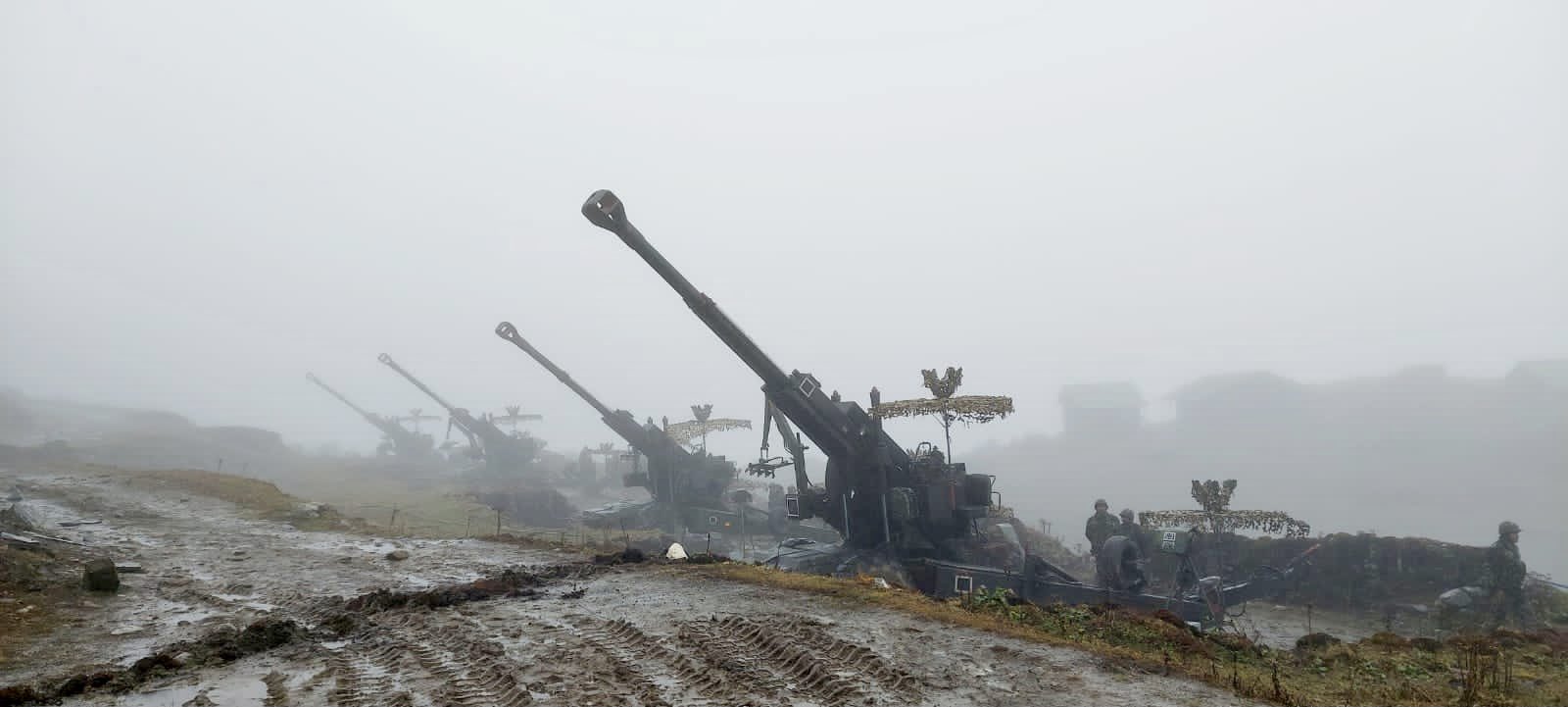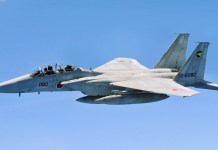The war in Ukraine might spill over into the Black Sea if Ukraine persists with its attempts to retake Snake (Zmeiny) Island.
A second attack on early Monday morning claimed both sides were achieving victory. But with the island still in Russian hands, it implies Kiev’s attack was unsuccessful. The strategically important island allows leverage over the Black Sea in monitoring naval movements and approaches to the city of Odesa.
Mesmerizing Image Of F-22 Raptor ‘Upside Down’ Awes Netizens Amid Talks On Stealth Jet’s Retirement
Ukrainian officials claim the “significant” victory against Russian forces, saying it “aimed strikes with the use of various forces” on the island, causing “significant losses” to the Russian garrison, with a Pantsir surface-to-air (SAM) system and a radar station destroyed.
Satellite images by US-based Maxar Technologies show damage visible to the tower on the island’s southern end and burned vegetation in several locations.
The statement by Natalia Humeniuk, head of the joint coordination center of Ukraine’s South Defense Forces, was short on details and indicated it was unsuccessful, given it went on to promise “follow-up” attacks.
The details were vague, saying it “required silence,” that “enemy losses are being verified” with any further information compromising operation security since the Russians are “continuously listening.”
A successful attack would have jubilant Ukrainians actively giving details of the Russian casualties, equipment losses, and possibly photos of the island back in Ukrainian hands.
Calling it a “mad attack,” the Russian Defence Ministry gave minute details of their resistance, the type of attack they repulsed, and the losses they claimed they inflicted on Ukrainians.
Lt Gen Igor Konashenkov said they destroyed more than 15 Ukrainian UAVs, guided by two TB-2 Bayraktar drones, while also detecting a US Air Force’ Global Hawk’ RQ-4 at high altitudes.
Russia said the Ukrainian UAVs were being provided cover by S-300 SAMs from the towns of Tuzla and Ochakov. Ukrainians are claimed to have used Tochka-U ballistic missiles, Uragan Multiple Rocket Launch Systems (MLRS), and US-made M-777 155 mm howitzers from the Kubansky Island, west of Odessa.

Russian Pantsir, Tor-M2, and Onyx cruise missiles shot down 13 UAVs, four Tochka-U, and 21 Uragan MLRS, adding “not a single Ukrainian missile or bomb reached its target,” with the “failed strike forcing the enemy to abandon the landing” on the island.
Claiming the Ukrainian Armed Forces (UAF) then targeted Russian oil rigs in the Black Sea after their attack failed, Russia conducted retaliatory strikes with Onyx cruise missiles. These destroyed hangars with TB-2 drones are located at Shkolny military airfield near Odessa, along with two platoons of M-777 and two S-300 at Kubansky mentioned above.
Last week, Ukraine claimed to have sunk the Russian support ship Vasili Beh, which was transporting crew and armaments to the Snake Island, that the British Ministry of Defense (MoD) said was carried out by using Harpoon anti-ship missiles.
This was the second Ukrainian attempt on Snake, with the first being on May 8. According to Russia then, UAF lost three Sukhoi Su-24 ground attack jets; one Su-27 fighter; a Mi-24 helicopter; three Mi-8 loaded with troops, and; three Centaur-class attack boats killing more than 50 Ukrainian troops.

Russia believes this first attempt was to open a supply route for western weapons into the Odesa and Mykolaiv regions, which Moscow’s control of Snake Island prevents.
Importance Of Snake Island
Russia had captured the Snake Island at the beginning of the war, anticipating some form of naval action to take Odesa if the offensives at Mariupol and Donbas failed.
However, one can assume it decided against an amphibious landing to not escalate the war into western Ukraine, which has been nearly untouched. The island is also off the coast of Romania, where the British are deployed on a NATO base.
A Ukrainian Intelligence Directorate (GUR) report also said Snake Island allows Russia to stage a tactical amphibious landing into Odesa. However, such an operation might also alienate the predominantly Russian sympathetic population.
Moreover, as the de-mining operations at Mariupol beach revealed, Ukrainians must have prepared for the contingency and mined the seas off Odesa, along with heavy urban defense within Odesa itself.
“If Russian troops succeed in occupying Snake Island and set up their long-range air-defense systems, they will control the sea, land, and air in the north-west part of the Black Sea and the south of Ukraine,” Ukrainian military expert Oleh Zhdanov had told the BBC. An S-400 missile system also endangers NATO’s southern flank.
Snake Island’s important strategic location allows complete control of the approaches to the port city of Odesa while providing Russia “with strategic air defense and coastal cruise missiles to dominate the north-western Black Sea,” according to a UK Defence Intelligence update on May 11.
The update was released following the first attempt on Zmeiny/Snake on May 8.
- The author can be reached at satamp@gmail.com
- Follow EurAsian Times on Google News




